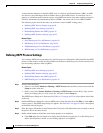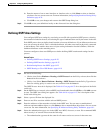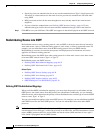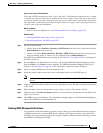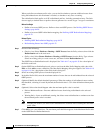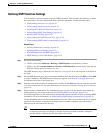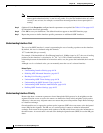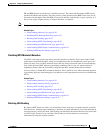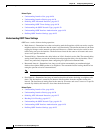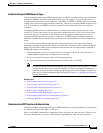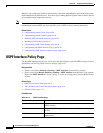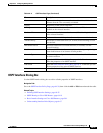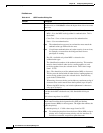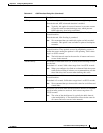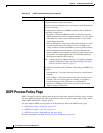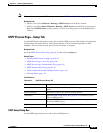
64-28
User Guide for Cisco Security Manager 4.4
OL-28826-01
Chapter 64 Configuring Routing Policies
OSPF Routing on Cisco IOS Routers
Related Topics
• Understanding Interface Cost, page 64-26
• Understanding Interface Priority, page 64-26
• Disabling MTU Mismatch Detection, page 64-27
• Understanding OSPF Timer Settings, page 64-28
• Understanding the OSPF Network Type, page 64-29
• Understanding OSPF Interface Authentication, page 64-29
• Defining OSPF Interface Settings, page 64-25
Understanding OSPF Timer Settings
OSPF uses a series of timers during operation:
• Hello Interval—Determines how often an interface sends hello packets, which are used to acquire
neighbors and act as indicators that the router is still functioning. The smaller the interval, the faster
topological changes on the network are detected. However, a smaller interval also results in more
traffic being sent over the interface. The hello interval must be the same on all routers and access
servers on a specific network.
• Transmit Delay—Determines the delay before an LSA is flooded over the link. The transmit delay
setting should take into account the transmission and propagation delays for the interface. These
factors are particularly important when configuring low-speed and on-demand links.
• Retransmit Interval—Determines how long to wait before retransmitting an unacknowledged
database description (DBD) packet to its neighbors. The retransmit interval setting should be low
enough to prevent excessive retransmissions.
Note You should increase the retransmit interval for serial lines and virtual links.
• Dead Interval—Determines how long an interface should wait before declaring its neighbor to be
down. This declaration is caused by an absence of hello packets from the neighbor during this
interval. The dead interval setting must be the same for all routers and access servers on a specific
network. By default, this interval is four times the hello interval.
Related Topics
• Understanding Interface Cost, page 64-26
• Understanding Interface Priority, page 64-26
• Disabling MTU Mismatch Detection, page 64-27
• Blocking LSA Flooding, page 64-27
• Understanding the OSPF Network Type, page 64-29
• Understanding OSPF Interface Authentication, page 64-29
• Defining OSPF Interface Settings, page 64-25



